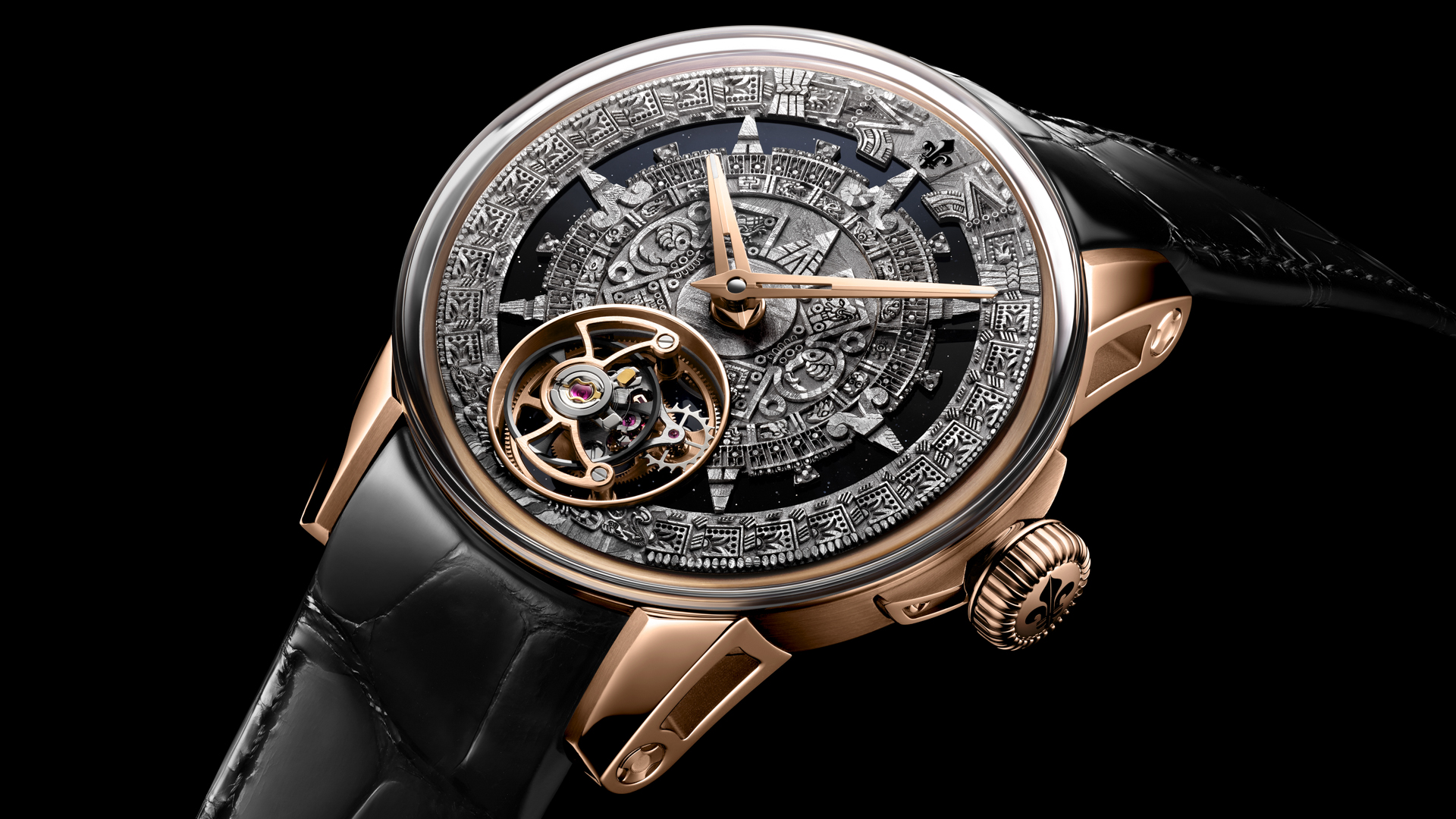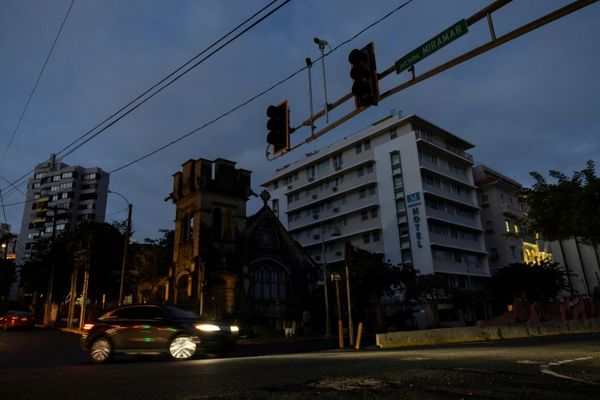
There are watches, and then there are watches. This is the latter. Called Fuego Nuevo, it’s a unique piece from Louis Moinet that features a dial made from meteorite with a laser-etched replica of the Aztec Sun Stone.
The dial is a disc cut from the Muonionalusta, one of the oldest meteorites discovered on Earth and formed some 4.5 billion years ago. The disc is just 0.5 mm thick, and is covered in 9,800 lines of laser-etched sketches – with depths of 0.2 and 0,1 mm – to replicate the Piedra del Sol, created in 1479 and also known as the Aztec Sun Stone.
Louis Moinet explains the significance of the stone: “Carved during the reign of Emperor Axayacatl, it was created to commemorate the Festival of the New Fire in 1479. This sacred ritual, celebrated at the end of each 52-year cycle, marked the rebirth of the sun and the perpetuation of the cosmic cycles that gave rhythm to Aztec life.”

Carved out of a block of basaltic olivine lava, the disc-shaped stone measures 3.6 mattress in diameter and weighs a massive 24 tonnes. It is recreated in stunning detail on the dial of the Fuego Nuevo. Adding to the visual drama (and the cost) is an LM135 calibre tourbillon automatic movement, visible at the six o’clock position and with a power reserve of 96 hours.
Other specifications include a 40.7 mm case made from 18k red gold and grade five titanium, a black leather strap, 26 jewels in the movement, and 30 metres of water resistance. One thing we don’t know is the price, but we suspect it’s a case of ‘if you have to ask…’.
Jean-Marie Schaller, owner and creative director of Louis Moinet, said: “I have always been fascinated by ancient civilisations, especially Mesoamerican cultures and their very advanced astronomical knowledge. They saw the cosmos as more than just a collection of stars but also as a great symbol of life’s eternal cycles.
"To reproduce this vision on the FUEGO NUEVO, I opted [for] the Muonionalusta meteorite as a backdrop and laser engraving as the technique to reproduce the Aztec Sun Stone. As for the mechanics, the flying tourbillon was the natural choice, because its rotations reminded me of the constant renewal of time and infinity.”







